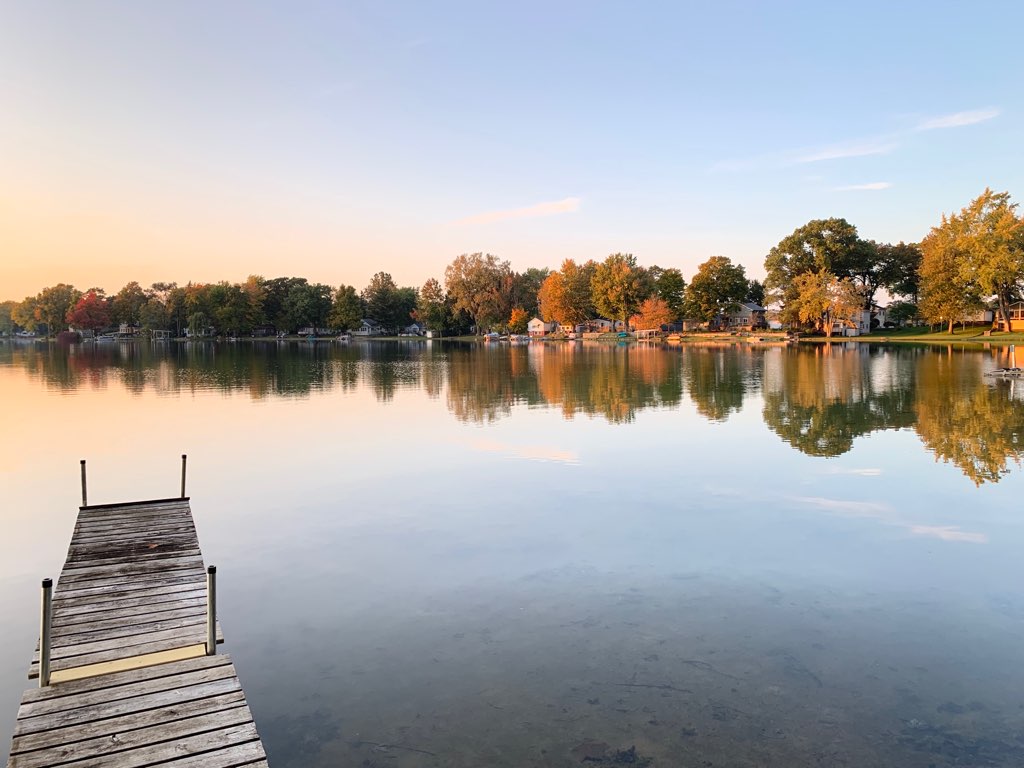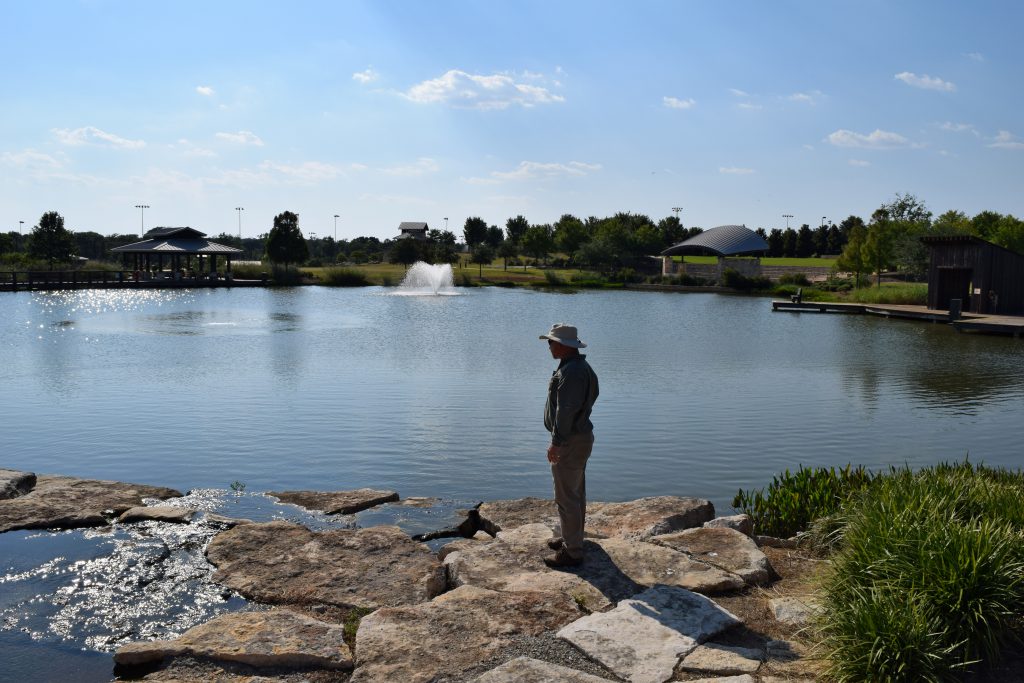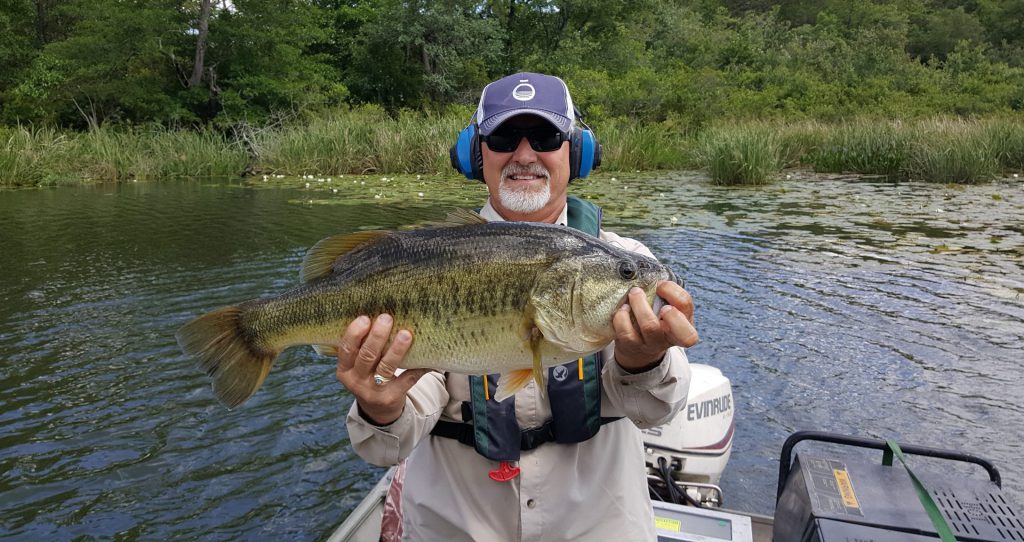
Fisheries Management: Water Quality Woes
One of the most amazing attributes of water is its ability to provide people with a sense of happiness. Regardless of upbringing, nearly all of us have something to gain in life by having access to a recreational lake or pond. Some people find enjoyment being surrounded by crystal clear water—the type of environment that entices people of all ages to jump in. Others find greater happiness with fertile, emerald water teeming with life as they spend hours trying to outsmart and entice hearty fish thriving beneath the surface. Likewise, there are some people who have a passion for waterbodies choked out with invasive vegetation, attracting a wide range of waterfowl with an all-you-can-eat buffet.
Although lakes and ponds have a variety of water uses, each waterbody has natural characteristics and water quality that determine its clarity, vegetation coverage, productivity, and a plethora of biological and chemical influences. Water quality is a primary factor that determines how much effort it will take to transform and maintain the waterbody to meet your goals. As a result, a strategic plan for monitoring and manipulating water quality should be at the center of nearly all aquatic management strategies.
After all, water is the medium. If your water isn’t healthy, your pond can’t be, either. If your waterbody is not meeting your aesthetic or recreational needs, it is fair to say that altering the water chemistry will likely increase the chances of success.

A Trophy Fishery Struggling with Water Quality Issues
Located in Louisiana, an angler’s paradise in the making underscored the importance of water quality management and the complexity that water quality presents to pond owners as they try to achieve their goals. The lake has the look and feel of a trophy bass fishery—the type that excites adults like they’re kids in a candy store. It is 48 acres in size with bald cypress trees scattered throughout. In this lake, bass have plenty of habitat options, with a fair portion of deeper water and good fish cover strategically located around the lake. Fish feeders go off like clockwork, sending baitfish into a feeding frenzy each day.
Although at first glance the lake appears to be a trophy fishery, its history is riddled with a fair share of water quality woes. The lake was built in the late 90s. Over the years, it became overrun with vegetation that provided great habitat for waterfowl, but severely impacted fishing. This eventually resulted in a failed fishery and unhappy owners.
Implementing Water Quality Restoration Solutions
Around 2014, the lake owners made the decision to improve the fishing. In the process of reducing the undesired plant growth via systemic treatments, they mucked out some of the excessive organic load by digging out and reshaping half of the lake. This greatly improved water depth in many areas and allowed them to introduce strategic fish cover to the renovated lake bottom.
The lake was starting to look more like a trophy bass fishery. Soon after renovation, the lake was stocked, feeders filled, and fish were off to the races in the revamped fishery. The fishery stayed productive year-round. Largemouth bass were growing incredibly well, the catch rates were high and anglers were thrilled and plankton blooms were consistently producing a 12-18-inch Secchi disk reading. A Secchi disk is an 8-inch disk with alternating black and white quadrants. By lowering the Secchi disk into the water until it can no longer be seen, lake management professionals are able to measure turbidity, which is the degree to which the water column is clouded by suspended particles.

How External Sources Influence Water Quality
Although the fish were progressing well, the fishery began showing signs of being over productive. The lake had 12-inch Secchi disk readings at times during the hot summer months, which put a strain on the dissolved oxygen levels. The intermittent dense algae blooms were fueled by several variables. First, the lake serves as a rookery for thousands of birds who roost in the cypress trees, transforming the beautiful lake into a giant bird toilet. Additionally, the waterbody is perched above its surroundings and is held together with levees. As a result, it does not have a watershed; the only water it receives is from rain landing on the lake’s surface. For that reason, the lake has a massive well with a six-inch pipe that moves enough water to raise the lake one inch in 24 hours. In an average year, the well runs enough to fill the lake once annually.
Fish Kill In A Trophy Fishery
The fishery’s strained water quality showed further signs of stress in September 2016 when the lake experienced a small fish kill in an isolated area. Then, in February 2018, the lake hit a tipping point. It was winter, and when most trophy fisheries in that region had three feet of visibility, this lake’s excessive nutrient load had fueled a dense blue-green algae bloom. The lake had experienced bad blooms before, but this time, the dissolved oxygen crashed, resulting in a massive fish kill that wiped out the bass population.
The fish kill was a heart breaker for the owners. At its peak, prior to the fish kill, the three-year-old fishery had produced high catch rates of 2-4-pound bass with 5-6-pound bass mixed in. But looking back, it became clear to management just how over-productive the fishery was. Prior to being transformed into a trophy fishery, the lake was choked out with vegetation and plagued with excessive nutrients. Once the vegetation was controlled, and some of the organic muck removed after draining the lake to reset it, the lake was still nutrient heavy. Based on water quality, the lake was more in line with the goals of a waterfowl lover. The goal of converting the waterbody into a trophy fishery was unsuccessful because the nutrient load was too great—and increasing—due to those thousands of roosting birds. If the lake was destined to be a trophy fishery, water quality would need to change.
The owner had a decision to make. Before making the decision, water quality samples were pulled to better understand how much work was required to bring water quality into a range that would facilitate a sustainable trophy fishery. The results were eye opening! The lake was hypereutrophic with 190 parts per billion (ppb) of total phosphorus, which is nearly four times higher than what is preferred.

Balancing Excess Phosphorus to Improve Water Quality
Additionally, the well was tested to better understand the lake’s water source. The results from the well water tests were astounding. Total phosphorus levels were 682 ppb. Needless to say, the well’s phosphorus levels would need attention if a trophy fishery was going to have a chance. Further water testing indicated that the well water was high in iron. This was favorable; when iron is exposed to an oxygenated environment it has the ability to bind with phosphorus, making phosphorus unavailable for algae to utilize.
With this data in hand, the owners decided to push forward and do what was required to overcome the chronic water quality issues. Before running the well any further, they installed a screen tower device commonly used by fish farmers to remove iron out of well water. Well water simply falls through a series of screens that expose the water to oxygen, causing the iron to drop out of suspension and accumulate on the screens as well as the surrounding areas. This process can naturally remove large amounts of phosphorus from the water as it becomes bound with the iron.
Introducing Oxygen to the Water Column
Next, they sought a better way to ensure that the lake water stayed oxygenated year-round, particularly near the well’s discharge. To do this, two nanobubble units equipped with oxygen generators were installed, providing high odds that the phosphorus entering the lake from the well would stay bound to the iron.
With the well’s water quality addressed, focus was then turned to the phosphorus within the water column and the lake’s sediment layer. Three tanker trucks of alum were applied to the lake in an afternoon to bind with phosphorus in the lake, making it unavailable for plants and algae to use. A few weeks post alum application, the total phosphorus levels had dropped from 190 ppb down to 62 ppb. This reduction in total phosphorus was a significant step in the right direction, and you could tell the water quality was improving simply by looking at the water.
To further reduce the lake’s phosphorus inputs, the owners switched to a low-phosphorus fish feed regimen. In this formulation, most of the phosphorus in the feed is bioavailable to fish, meaning less of it passes through to the water column.

Achieving Big, Healthy Bass!
After a thorough plan was put in place to improve water quality, rotenone was applied to the lake to ensure that all of the little baitfish and predators stocked would have high odds of survival. Then, in the spring of 2019, forage fish were restocked. They were followed by two-inch Florida Largemouth bass fingerlings in the summer.
Based on its history, we know that the lake can grow high quality bass in just a few years. With a solid plan in place to keep the lake’s water quality within the desired range of a trophy bass fishery, this lake is shaping up to become an angler’s paradise. With a little luck and some hard work, the waterbody will bring happiness to family and friends annually and live up to the expectations of those seeking the peacefulness and happiness that lakes and ponds provide.
The Importance of Electrofishing
Grow Big, Healthy Fish with Help From Fisheries Biologists
SOLitude Lake Management is a nationwide environmental firm committed to providing sustainable solutions that improve water quality, enhance beauty, preserve natural resources and reduce our environmental footprint. SOLitude’s team of aquatic resource management professionals specializes in the development and execution of customized lake, stormwater pond, wetland and fisheries management programs that include water quality testing and restoration, nutrient remediation, algae and aquatic weed control, installation and maintenance of fountains and aeration systems, bathymetry, shoreline erosion restoration, mechanical harvesting and hydro-raking, lake vegetation studies, biological assessments, habitat evaluations, and invasive species management. Services and educational resources are available to clients nationwide, including homeowners associations, multi-family and apartment communities, golf courses, commercial developments, ranches, private landowners, reservoirs, recreational and public lakes, municipalities, drinking water authorities, parks, and state and federal agencies. SOLitude Lake Management is a proud member of the Rentokil Steritech family of companies in North America.









